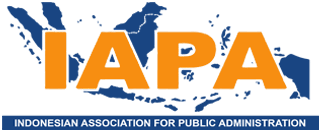IMPLEMENTATION OF VILLAGE INDEX DEVELOPMENT POLICY (A Study in Kutawaringin District, Bandung Regency)
DOI:
https://doi.org/10.30997/jsh.v12i1.4033Keywords:
Policy Implementation, Village Index DevelopmentAbstract
This study focuses on the Implementation of Village Index Development Policy in Kutawaringin District, Bandung Regency with a sub-focus of research, namely communication factors, resources, disposition and bureaucratic structure. With the aim of knowing and analyzing the Implementation of Village Index Development Policy. This research uses qualitative research method, with data analysis techniques that include data collection, data reduction, data presentation and conclusion drawing. The results showed that the Implementation of Village Index Development Policy in Kutawaringin District, Bandung Regency was assessed based on factors that influenced the implementation of policies, namely communication, resources, disposition and bureaucratic structure were not optimal. Obstacles in the Implementation of Village Index Development Policy in Kutawaringin District, Bandung Regency is the socialization that is less thorough, less clear and less intensive. Human resources, especially at the village level, do not understand SOP. Many villages do not want to join the policy program. There are still village chiefs who do not want their villages to rise because of concerns about not getting village development funding, and the dominant authority of village chiefs in some villages is less support in policy implementation. Efforts made to overcome obstacles are managing by continuing to conduct effective communication between all levels of bureaucracy/implementor policies ranging from the Bandung Regency level to the village level in the Kutawaringin District. Socialization and coaching continues to be carried out to villages, especially six villages that are still in developing village status. Providing more intensive motivation to villages that are already in Advanced Village status in order to try to increase into Independent Villages.
References
Laksono, Bayu Adi, dan Romlah, Nasyikhatur. (2019). Pemberdayaan Masyarakat Melalui Lembaga Sosial dan Pendidikan. Jurnal Pendidikan Nonformal, 14(1): 1-11.
Martoyo. 2020. Implementasi Kebijakan Analisis Pemberdayaan Masyarakat Keluarga Miskin di Kota Pontianak. Jurnal Sosial Humaniora, 11(2): 114–120.
Moleong, Lexy J. 2009. Metode Penelitian Kualitatif.: Remaja Rosdakarya, Bandung.
Miles, dan Huberman. 2009. Analisis Data Kualitatif. UI-Press. Jakarta,
Nugroho, Dwijowijoto, Ryant. 2008. Kebijakan Publik Formulasi, Implementasi dan Evaluasi. PT. Elex Media Komputindo, Jakarta.
Ramdan (2019) Gubernur Jawa barat berikan mobil MASKARA Ke desa yang memiliki kriteria. Diakses, 20 Desember 2019 dari https://zonabandung.com/ ragam/2130/gubernur-jawa-barat-berikan-mobil-maskara-ke-desa-yang-memiliki-kriteria.html
Sugiyono. 2012. Metode Penelitian Kuantitatif Kualitatif dan R & D. Alfabeta, Bandung.
Sutopo. 2006. Metodologi Penelitian Kualitatif. UNS, Surakarta.
Wardati, Zulmasyhur dan Susanti. 2020. Implementasi Kebijakan Pengendalian Penyakit Demam Berdarah Dengue (DBD) di Kecamatan Tambora Kota Administrasi Jakarta Barat. Jurnal Sosial Humaniora, 11(2): 121–140.
Widodo, Joko. 2010 Analisis Kebijakan Publik. Bayumedia. Malang
Winarno, Budi. 2012. Kebijakan Publik : Teori dan Proses. CAPS. Yogyakarta.
Undang-Undang Republik Indonesia No. 6 Tahun 2014 Tentang Desa.
Peraturan Menteri Desa, Pembangunan Daerah Tertinggal, dan Transmigrasi Republik Indonesia Nomor 2 Tahun 2016 Tentang Indeks Desa Membangun.
Downloads
Published
How to Cite
Issue
Section
License
Copyright (c) 2021 Copyright © 2018 OJS Universitas Djuanda All rights reserved

This work is licensed under a Creative Commons Attribution-ShareAlike 4.0 International License.
Authors submitting manuscripts must understand and agree to copyright the manuscript of the article was transferred to OJS Djuanda University. All rights reserved. The copyright release statement for the Journal of Social Humanities is set out in the Agreement Transfer of Copyright. This work is licensed under Creative Commons Attribution-ShareAlike (CC BY-SA) version 4.0 where Author and Readers can copy and redistribute material in any media or format , as well as mixing, modifying and building materials for any purpose, but they must provide appropriate credit (citing articles or content), provides a link to the license, and indicates when changes have been made. If you mix, modify, or develop, the materials you have to distribute your contributions are under the same license as the originals.
















